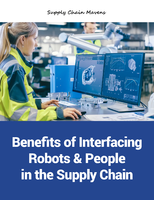Software identifies resource interdependencies.
Press Release Summary:
IBM CICS® Interdependency Analyzer for z/OS®, for use with CICS Transaction Server for OS/390® or CICS Transaction Server for z/OS, identifies sets of CICS resources used by individual CICS transactions and their relationships to other CICS resources. Run-time tool enables users to understand make-up of their application set and includes support for CICS commands; EXEC calls to DB2, IMS, and WebSphere® MQ; and ability to hold information on multiple CICS regions in one VSAM file.
Original Press Release:
IBM CICS Interdependency Analyzer for z/OS V1.2 Helps Identify Resource Interdependencies within CICS Systems
At a glance
The IBM CICS Interdependency Analyzer for z/OS (CICS IA) helps users better understand the make-up of their application set, improving their ability to maintain and enhance the applications. V1.2 of CICS IA delivers a range of enhancements, including extended support for CICS commands, support for EXEC calls to DB2, IMS, and WebSphere MQ, and the ability to hold information on multiple CICS regions in one VSAM file.
For ordering, contact:
Your IBM representative, an IBM Business Partner, or the Americas Call Centers at 800-IBM-CALL (Reference: LE001).
Overview
The IBM CICS® Interdependency Analyzer for z/OS® (CICS IA) is a run-time tool for use with CICS Transaction Server for OS/390® or CICS Transaction Server for z/OS. By identifying sets of CICS resources used by individual CICS transactions, and their relationships to other CICS resources, it enables users to understand the make-up of their application set, including:
· What a CICS region contains
· What resources a transaction needs in order to run
· Which programs use which resources
· What resources are no longer used
This gives users a much improved ability to maintain, enhance, modify, or redistribute their application portfolio. While CICS is running, interdependencies are captured as they occur, then stored in a VSAM file. In turn, this is loaded to a DB2® database, from which these resource relationships can be displayed. Summary and detailed reports can be printed from the VSAM file.
V1.2 of CICS IA delivers a range of enhancements, including the following:
· Support for CICS TS V2.2 commands supporting long TS Queue names, FEPI, TCP/IP, Web, and Java(TM) resources
· Support for SYSID information even where not specified in the EXEC CICS command
· Inclusion of remote calls to DB2, IMS(TM), and WebSphere® MQ resources
· The ability to hold information on several CICS regions in one VSAM RLS file
· Provision of a single point of control at one terminal for configuring CICS IA options for each region
· The ability to view the last date on which a CICS resource was used
Key prerequisites
CICS IA V1.2 requires OS/390 V2.10, or later, and is for use with CICS Transaction Server for OS/390 V1.3 or CICS Transaction Server for z/OS V2.2.
Planned availability date
September 26, 2003
Description
The IBM CICS Interdependency Analyzer for z/OS (CICS IA) is a run-time tool for use with CICS Transaction Server that identifies the sets of CICS resources used by individual CICS transactions, and their relationships to other CICS resources. It runs as a set of exits in each chosen CICS region, and intercepts the EXEC CICS commands (and some other commands), and records the associated resource interdependencies: transactions, programs, BMS maps, files, TS queues, TD queues, and so on. This enables the user to see what a CICS region contains; what resources a transaction needs in order to run; which programs use which resources; and what resources are no longer used. This knowledge greatly improves the ability to enhance, modify, or optimize the portfolio of applications.
CICS IA V1.2 is comprised of the following principal components:
· Collector - This is an exit-driven function that captures the interdependencies as they occur in each enabled CICS region, and stages the writing of these interdependencies to an MVS(TM) dataspace. An asynchronous transaction then copies these interdependencies to a VSAM file. The VSAM file can be used to rebuild the dataspace at CICS restart.
· Query Database - This DB2 database is loaded from the VSAM files under operator control, and provides the interdependency information to the Query Interface.
· Query Interface - This interface displays any CICS resource-to-resource relationships from the Query Database. It displays end-to-end relationships such as the files used by a transaction and the functions involved like browse, update, and so on.
· Scanner - This is a static function which produces summary and detailed printed reports on the EXEC CICS commands it finds in modules in an application load library.
· Reporter - This function reports on the selected CICS commands that were executed and captured by the Collector and stored in VSAM files. The reports can be printed or displayed.
Important enhancements delivered in CICS IA V1.2 include the following:
· CICS IA V1.2 supports all CICS commands up to and including those of CICS TS V2.2. This means that long TS Queue names, FEPI, TCP/IP, Web, and Java resources are now supported.
· SYSID information for EXEC CICS commands is collected, even where the SYSID is not specified in the command itself but is set by other means, for example by an exit (such as in workload balancing or a customer exit). This function requires APAR PQ76355 for CICS Transaction Server for OS/390 V1.3, or APAR PQ76357 for CICS Transaction Server for z/OS V2.2. These will be made available by the end of 2003.
· To gain a fuller picture of the resources used by a transaction, resource relationships are now collected and queried for the following non-CICS EXEC calls:
- EXEC SQL calls to DB2 Universal Database® resources
- EXEC DLI calls to IMS Database resources (to be delivered via the service channel at a later date)
- EXEC MQM calls to WebSphere MQ resources
· It is now possible for the user to gather resource information for several CICS regions into one VSAM Record Level Sharing (RLS) file.
An online interface is provided where the user can maintain the status of the CICS IA Collectors in all enabled CICS regions from one CICS terminal. This gives a single point of control for configuring CICS IA options for each region. This is dependent on the use of VSAM RLS.
Information is now available via the Reporter on the date when a resource was last used. This can be used for housekeeping of CICS resource definitions.
Accessibility by people with disabilities
The CICS Interdependency Analyzer V1.2 is operated using the keyboard. The product displays standard 3270 panels which have been tested for use by people with visual impairment using the JAWS screen reader. The product documentation, the User's Guide and Reference , is provided in softcopy (PDF) format.
Section 508 of the U.S. Rehabilitation Act
IBM CICS Interdependency Analyzer for z/OS V1.2 is capable as of September 26, 2003, when used in accordance with IBM's associated documentation, of satisfying the applicable requirements of Section 508 of the Rehabilitation Act, provided that any assistive technology used with the product properly interoperates with it.
Value Unit based pricing
Value Unit based pricing will help to align the prices of these products to the principle of the PSLC pricing curve which provides for a lower price per MSU (millions of service units per hour) for larger capacities.
There is also be a price benefit when customers grow their capacity. Additional capacity will based on the number of Value Units (MSUs) the customer has already installed, for example, additional capacity will not be priced starting at the base with a higher price per unit but on the capacity that is already installed.
Note that Value Units of a given product cannot be exchanged/interchanged/aggregated with Value Units of another product.
IPLA and Subscription and Support considerations
IPLA licenses can be transferred from one machine to another within, but not limited to an enterprise. The customer may aggregate the capacity for all the processors the product is operated on to achieve a more economic price. This will result in a single Proof of Entitlement. It is the customer's responsibility to manage the distribution of Value Units within the limits of the entitlement of the product license.
Subscription and Support must cover the same capacity as the product license entitlement. Subscription and Support will be available in the country in which the agreement is made.
Product positioning
CICS Interdependency Analyzer for z/OS helps users to understand the resource usage in their CICS systems in order to help with decisions on changing and improving systems, such as:
· Splitting workload and moving applications to more CICS regions
· Allowing the benefits of workload balancing to be exploited across CICSPlex® and Sysplex
· Maintaining, enhancing, and migrating business applications
Information provided by CICS IA is vital when planning improvements or expansion of a system. It is ideal when systems are being merged or consolidated, for example, as a result of a company acquisition.
Customers who are using CICS Transaction Affinities Utility (a component of CICS Transaction Server) to identify the affinities within their CICS systems will benefit from the additional capabilities of cross-system analysis which CICS IA provides.
CICS IA and WebSphere Studio Asset Analyzer (WSAA) complement each other to provide a complete and accurate picture of CICS applications. The principal objective of CICS IA is improved application maintenance, whereas the purpose of WSAA is improved reuse of applications. CICS IA looks at the data as the product is running, whereas WSAA looks at the source; CICS IA looks at data over a period of time, whereas WSAA is static; CICS IA presents its data via the 3270 interface or in reports, whereas WSAA employs a browser interface.
Trademarks
IMS and MVS are trademarks of International Business Machines Corporation in the United States or other countries or both.
CICS, z/OS, OS/390, DB2, WebSphere, DB2 Universal Database, and CICSPlex are registered trademarks of International Business Machines Corporation in the United States or other countries or both.
Java is a trademark of Sun Microsystems, Inc.
Other company, product, and service names may be trademarks or service marks of others.




